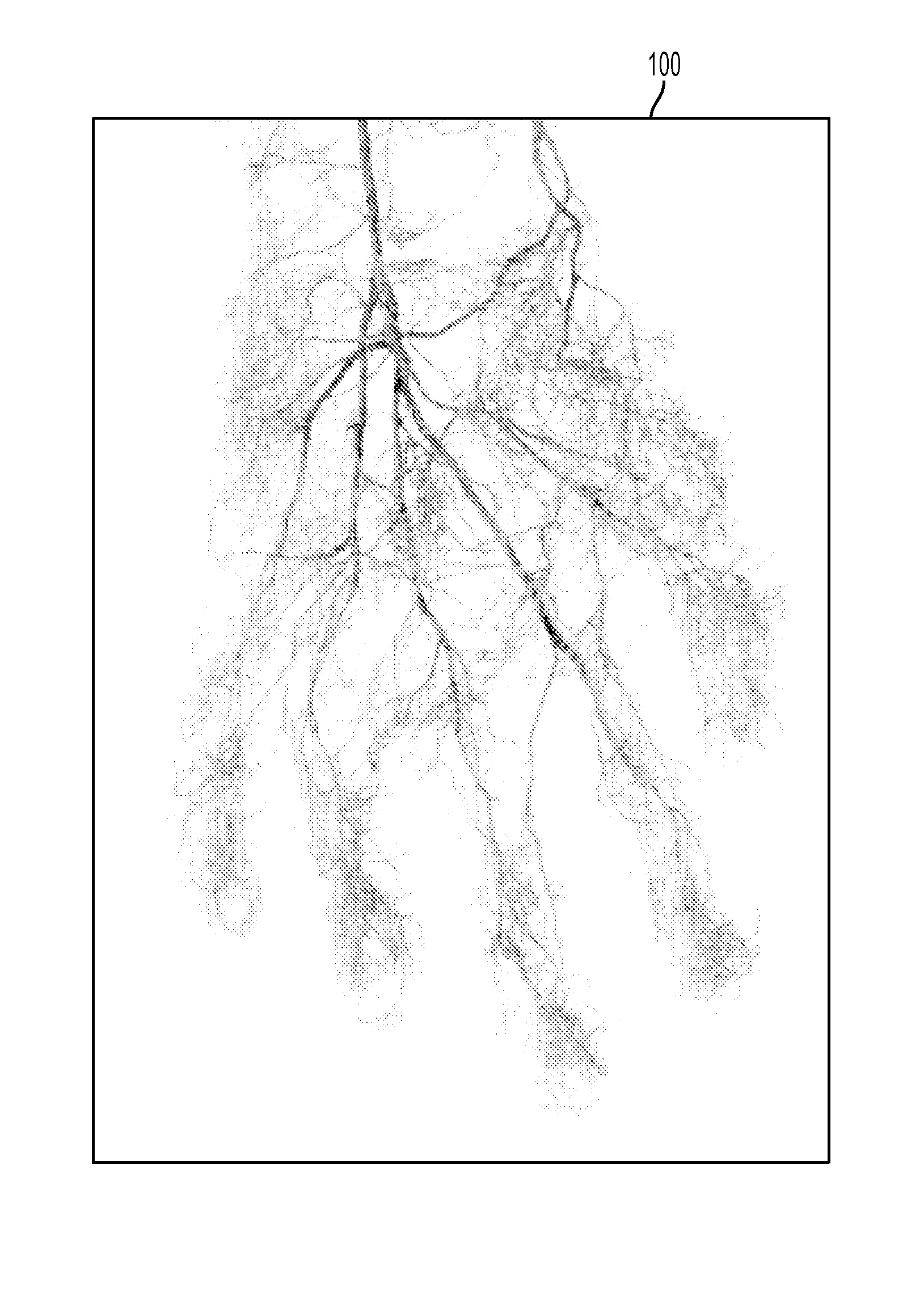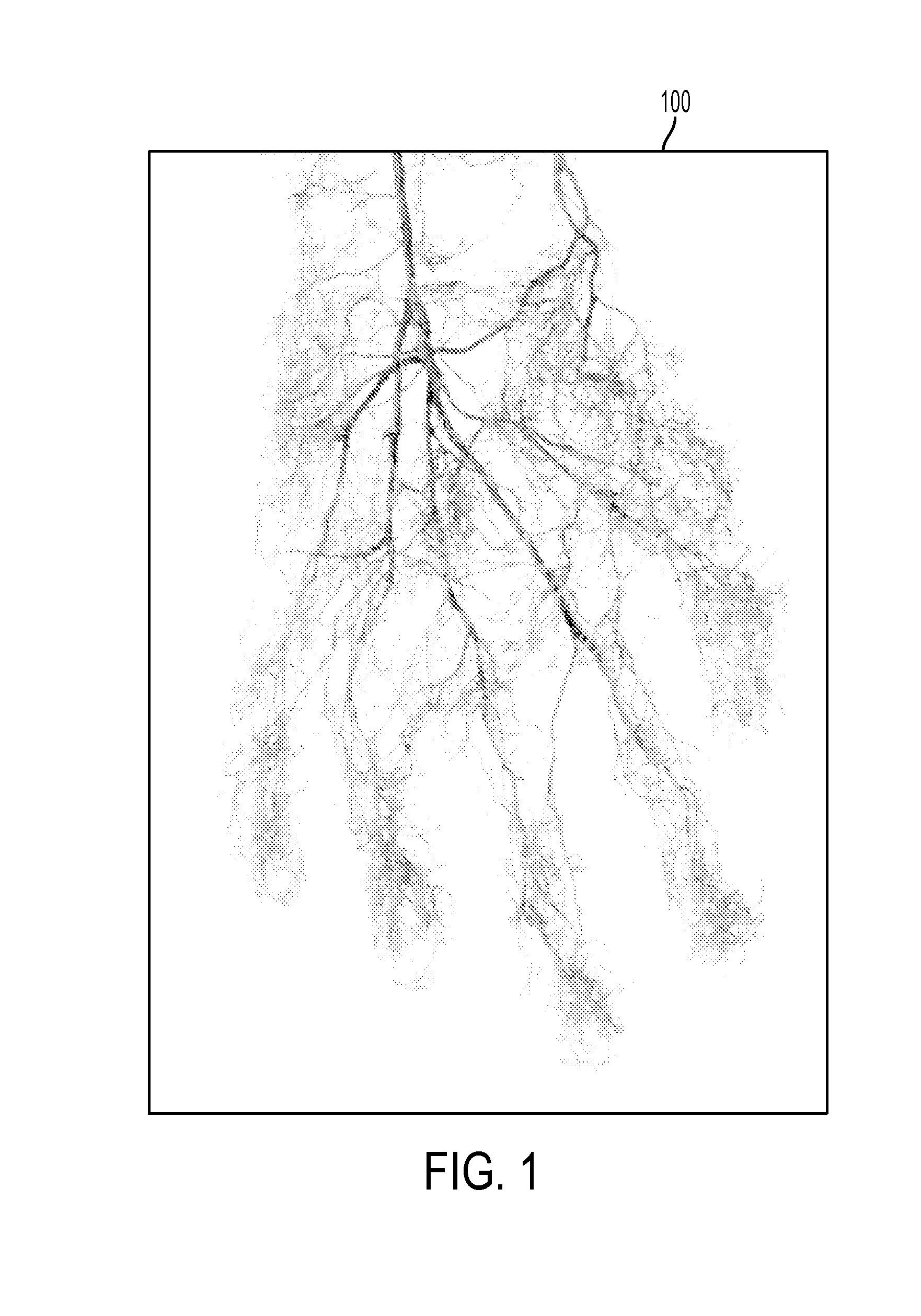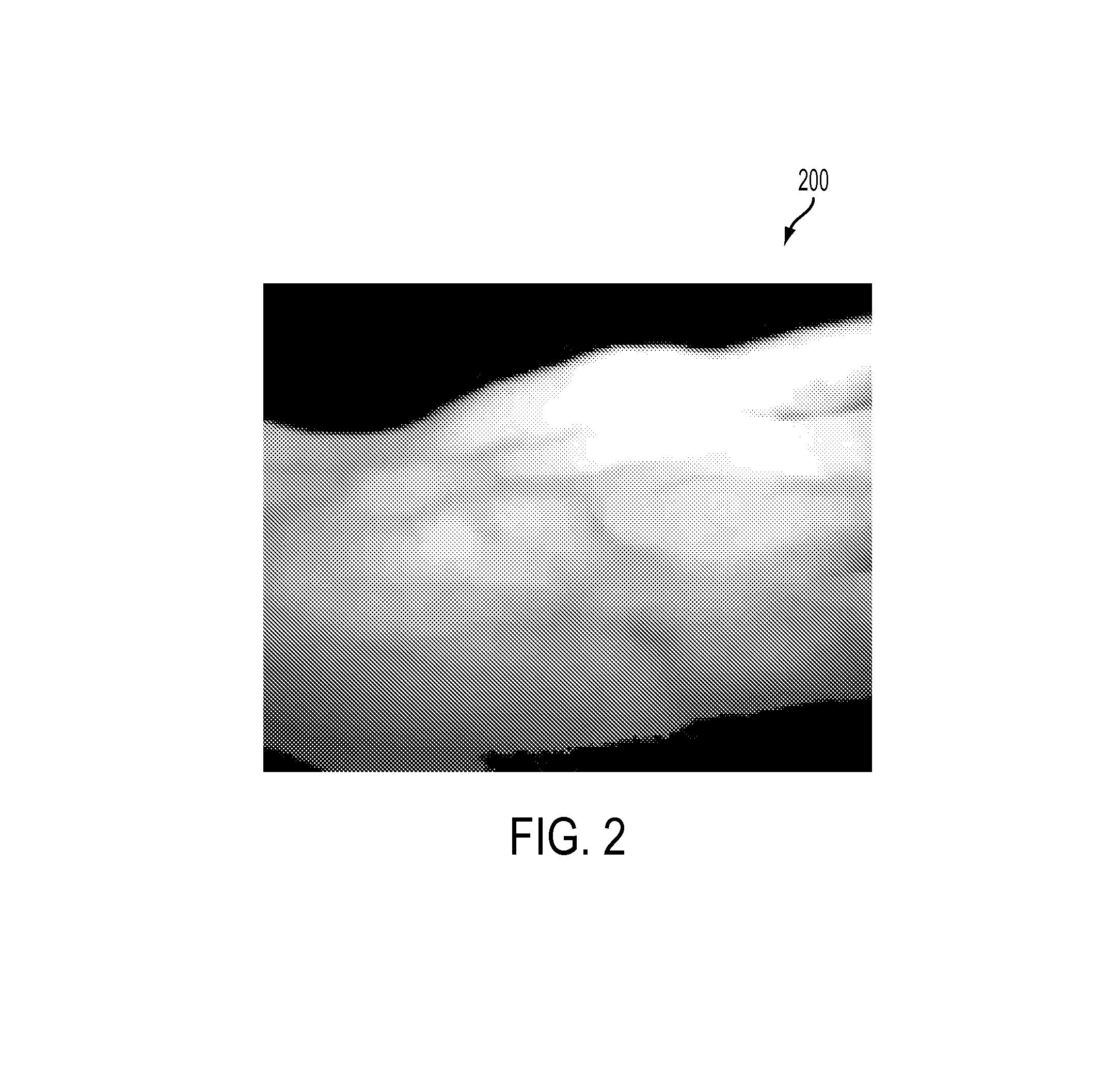Processing a video for vascular pattern detection and cardiac function analysis
a vascular pattern and video processing technology, applied in image enhancement, instruments, angiography, etc., can solve the problems of further failure, patient discomfort, dependency, and even more likely to suffer from the adverse effects of continued monitoring of elderly patients and those suffering from cardiac conditions
- Summary
- Abstract
- Description
- Claims
- Application Information
AI Technical Summary
Benefits of technology
Problems solved by technology
Method used
Image
Examples
example embodiment
Flow Diagram of Example Embodiment
[0044]Reference is now being made to the flow diagram of FIG. 5 which illustrates one example embodiment of the present method for analyzing a video of a subject of interest to determine cardiac function parameters in a remote sensing environment. Flow processing begins at step 500 and immediately proceeds to step 502.
[0045]At step 502, a video is received of a region of exposed skin of a subject of interest being monitored for cardiac function. The video has been captured using a video system comprising at least one video camera that outputs data comprising color values collected for pixels by at least one visible channel and at least one infrared video camera that outputs data comprising intensity values collected for pixels over at least one infrared channel. One example video system which simultaneously captures video in both the visible and infrared wavelength ranges is shown in FIG. 4. For vascular pathway detection, the infrared video may be ...
PUM
 Login to View More
Login to View More Abstract
Description
Claims
Application Information
 Login to View More
Login to View More - R&D
- Intellectual Property
- Life Sciences
- Materials
- Tech Scout
- Unparalleled Data Quality
- Higher Quality Content
- 60% Fewer Hallucinations
Browse by: Latest US Patents, China's latest patents, Technical Efficacy Thesaurus, Application Domain, Technology Topic, Popular Technical Reports.
© 2025 PatSnap. All rights reserved.Legal|Privacy policy|Modern Slavery Act Transparency Statement|Sitemap|About US| Contact US: help@patsnap.com



